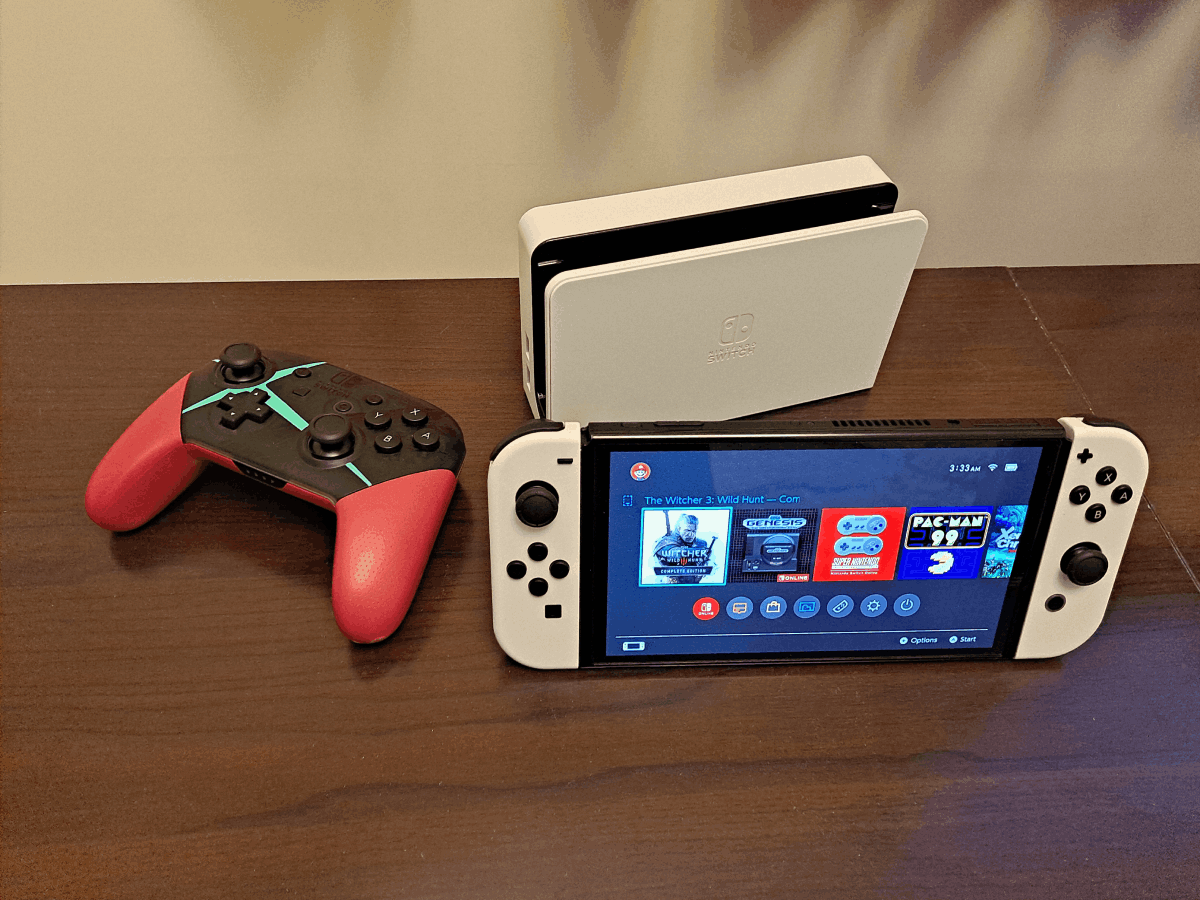Projector
Monitor
Lighting
Digital Display
Job References
This site uses cookies. By continuing to browse the site you are agreeing to our use of cookies, you can also manage preferences.
This site uses cookies. By continuing to browse the site you are agreeing to our use of cookies, you can also manage preferences.
Projector
Monitor
Lighting
Digital Display
Job References
Projector
Monitor
Lighting
Digital Display
Job References
Knowledge Center Support
We recently decided to return to gaming on the Nintendo Switch, namely the newer OLED version with the 7” screen and embedded LAN port in the dock. We thought this offered a good opportunity to share some thoughts on Nintendo’s hybrid console, which we bought on day one back in March 2017 and thus were very curious about the more recent OLED revision.
The good news is that if you enjoy gaming on the go, prize flexibility, and don’t care that much about graphics, then the Switch is still a wonderful platform. The more qualified news is that if you do care about graphics, then the Switch is best enjoyed either on the OLED screen of the unit itself, or on smaller form factor displays. To be fair, the OLED upgrade really speaks volumes about Nintendo’s commitment to portable gaming, as the new model doesn’t confer any advantages in docked mode compared to 2017 launch Switch. We’ll need to wait for the inevitable Switch successor to get better docked performance.
Despite releasing five years ago and being barely more powerful than an Xbox 360 or PS3, the Switch manages to deliver impressive gaming, especially in first party Nintendo games. If you like your Mario and Zelda titles, then you can look forward to 720p 60Hz on handheld and 1080p 60Hz docked, by and large. However, more mainstream or core titles like The Witcher 3 simply don’t look anywhere near as good as they do on PS4 or Xbox One, let alone PS5, Xbox Series X/S, or baseline gaming PCs. Any graphically complex game needs to make compromises in textures, object geometry, and visual effects to run on Switch at an acceptable framerate. That doesn’t mean AAA games look bad on Switch, they just look much more simplified and “flatter” than on other platforms, which leads us to the next point.
The Switch’s 720p or 1080p visuals don’t translate very well to big screen TVs and monitors. When playing The Witcher 3 and Sniper Elite 4 on Switch OLED with a 55” QLED TV, the visuals were obviously inferior to the same games running on PS5 and Xbox Series X/S. The bigger the screen, the more apparent any shortcomings with graphics performance, and at heart the capable Switch was designed to be a very good portable console, with TV output as an option. We really don’t think the console was meant for anything larger than 32” if we’re being totally honest.
Nintendo’s brilliant engineers designed the Switch for 1280 x 720 on a 6.2” screen, or in the case of the OLED model, a 7” screen. With the latter, that’s roughly 200 pixels per inch (PPI), which is very dense and looks super nice. Consider that as a rough rule of thumb, 100-110 pixels per inch are good, and 300 is “retina” as Apple like to describe optimal viewing. With that in mind, you can see why the Switch is best experienced in handheld mode.
Output your Switch to a 65” TV in 1920 x 1080, and your pixel density drops to 32. Yes, 32 pixels per inch. That’s way too low. Graphics appear blown up, fuzzy, flat, and very low poly. You can sit very far away from the screen to mitigate this effect, but that’s not a very amenable solution.
Having said all that, if you mostly game in handheld mode on your Switch OLED but want the occasional larger screen experience, then a good middle ground are smaller monitors. For example, a 25” 1920 x 1080 monitor offers a pixel density per inch of close to 90, which is good. Most people won’t notice the difference compared to a PPI of 100. But 32 is too low.
And all of this is assuming the Switch OLED dock outputs 1080p to your display of choice. In many cases that won’t be true. Run a AAA title like The Witcher 3 or Doom Eternal, and often the docked resolution will drop far below 1080p, reducing your pixel density. Again, we’d like to reiterate this is not a criticism of the Switch, as the console was really meant to be enjoyed on the small portable screen, at least for people who prefer sharp and detailed graphics. If you don’t mind making compromises, then of course there’s nothing wrong with playing Switch on a big screen as-is.
Indeed, a fast 1080p gaming monitor with HDMI plays great host to a docked Nintendo Switch OLED. While not as sharp as the 7” handheld screen, this is the best we got to great looking graphics with the console in docked mode. Our attempts to tweak big screen TVs didn’t succeed in making Switch visuals shine, but with the proper monitor we had good results out of the box and with no need to even tinker with settings. Something to think about if you’re a Switch fan!
Thanks for your feedback!